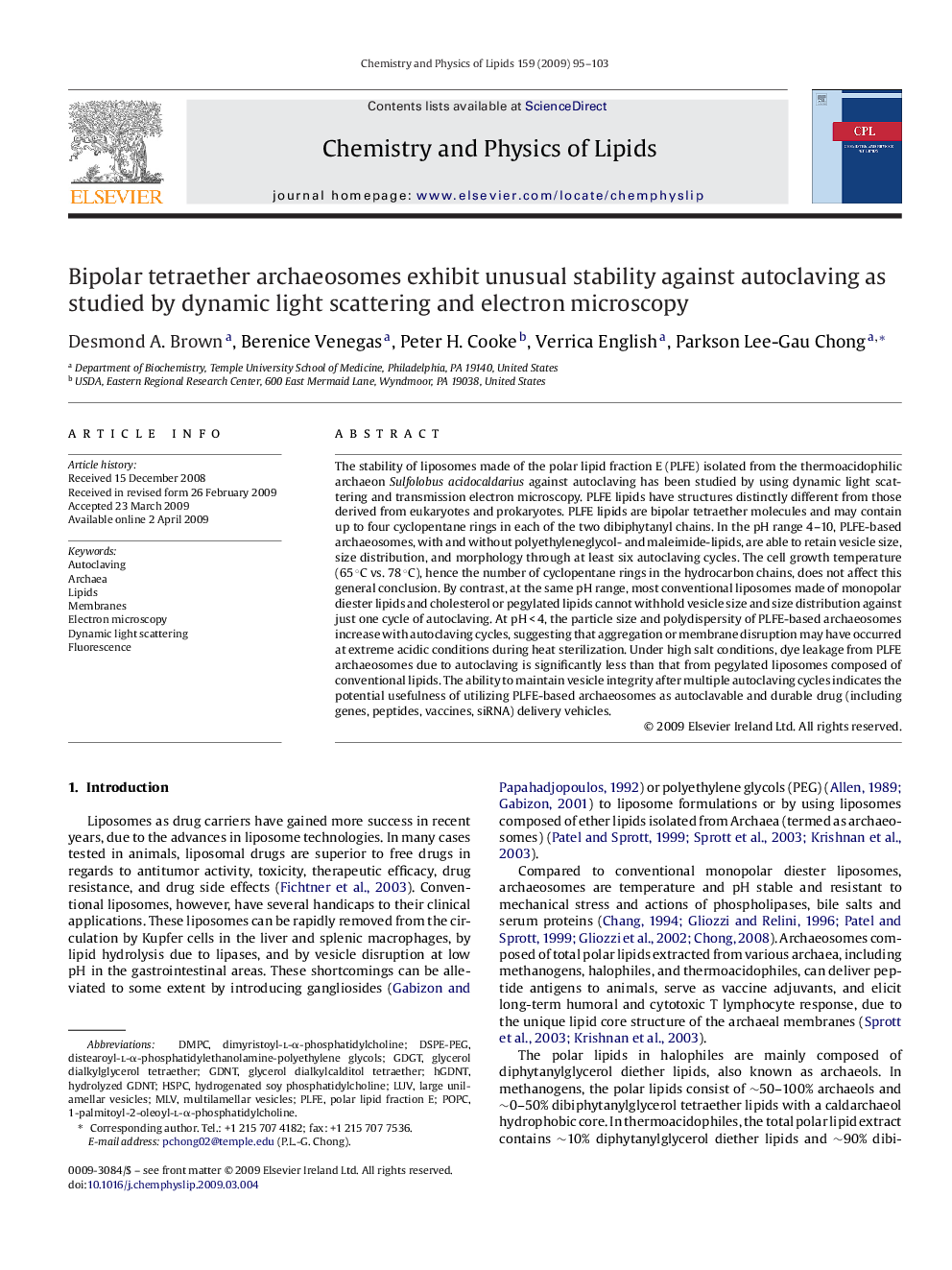| Article ID | Journal | Published Year | Pages | File Type |
|---|---|---|---|---|
| 1252391 | Chemistry and Physics of Lipids | 2009 | 9 Pages |
The stability of liposomes made of the polar lipid fraction E (PLFE) isolated from the thermoacidophilic archaeon Sulfolobus acidocaldarius against autoclaving has been studied by using dynamic light scattering and transmission electron microscopy. PLFE lipids have structures distinctly different from those derived from eukaryotes and prokaryotes. PLFE lipids are bipolar tetraether molecules and may contain up to four cyclopentane rings in each of the two dibiphytanyl chains. In the pH range 4–10, PLFE-based archaeosomes, with and without polyethyleneglycol- and maleimide-lipids, are able to retain vesicle size, size distribution, and morphology through at least six autoclaving cycles. The cell growth temperature (65 °C vs. 78 °C), hence the number of cyclopentane rings in the hydrocarbon chains, does not affect this general conclusion. By contrast, at the same pH range, most conventional liposomes made of monopolar diester lipids and cholesterol or pegylated lipids cannot withhold vesicle size and size distribution against just one cycle of autoclaving. At pH < 4, the particle size and polydispersity of PLFE-based archaeosomes increase with autoclaving cycles, suggesting that aggregation or membrane disruption may have occurred at extreme acidic conditions during heat sterilization. Under high salt conditions, dye leakage from PLFE archaeosomes due to autoclaving is significantly less than that from pegylated liposomes composed of conventional lipids. The ability to maintain vesicle integrity after multiple autoclaving cycles indicates the potential usefulness of utilizing PLFE-based archaeosomes as autoclavable and durable drug (including genes, peptides, vaccines, siRNA) delivery vehicles.
